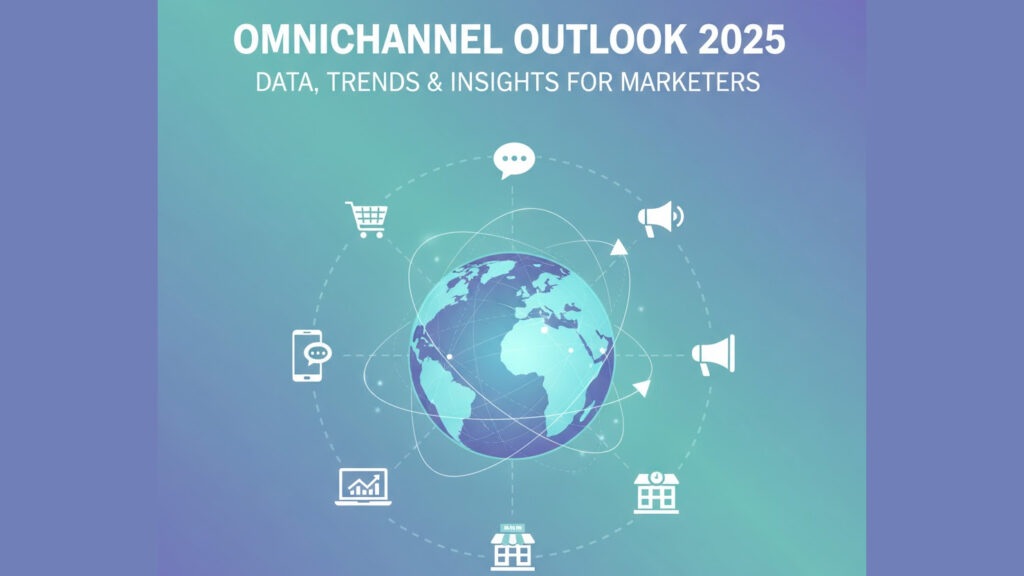
HOME / BLOG / STATISTICS
Omnichannel Statistics for 2025: Data, Trends & Insights Every Marketer Needs
- October 9, 2025
- Bill Nash
- 4:56 pm
In 2025, the omnichannel experience is no longer optional — it’s the baseline expectation. As customers seamlessly shift between devices, stores, apps, social platforms, and more, brands that don’t unify their touchpoints will fall behind. In this article, you’ll find the freshest, most authoritative omnichannel statistics — from customer behavior to revenue impact to forecasts — along with actionable takeaways for marketing leaders and e-commerce teams.
Table of Contents
1. Omnichannel Adoption & Consumer Behavior
1.1 Prevalence of Omnichannel Shoppers
According to a large survey of 46,000 retail shoppers, 73% engage across multiple channels during their buying journey. UniformMarket
In 2025, most shopping journeys begin online: 83% of customers research products online first before visiting a store. UniformMarket+1
In-store, 72% of shoppers use their smartphones for comparing prices or reading reviews while on the floor. UniformMarket+1
1.2 Channel Shift & Cross-Device Behavior
Omnichannel shoppers integrate an average of six touchpoints across their journey. Amra and Elma LLC+1
Since the pandemic, roughly 33% of U.S. customers consistently use omni features like BOPIS (buy online, pick up in store). UniformMarket
Companies with strong omnichannel engagement share customer data across 77% of their channels versus 48% for weaker implementations. porchgroupmedia.com+2Loyal Guru+2
2. Revenue, Retention & Conversion Impact
2.1 Revenue Lift & Sales Growth
Omnichannel retailers report 179% faster revenue growth than those without integrated strategies. capitaloneshopping.com
Retailers that reach consumers via 3+ channels generate 250% more engagement (vs. single-channel retailers). capitaloneshopping.com
Omnichannel consumers account for ~27% of retail sales. capitaloneshopping.com
2.2 Retention, Loyalty & Lifetime Value
Brands with robust omnichannel engagement retain 89% of customers, while weak omnichannel brands retain only 33%. Invesp+2Loyal Guru+2
Omnichannel shoppers deliver a 30% higher lifetime value (LTV) compared to single-channel shoppers. capitaloneshopping.com+1
Existing customers spend 67% more than new customers — amplifying the need for retention through omnichannel strategies. Amra and Elma LLC
2.3 Conversion & Cart Abandonment
Retailers implementing unified commerce see 18% lower cart abandonment rates. manh.com
Some omnichannel-enabled features (e.g. real-time in-store inventory visibility) show 3.3% conversion rates, outperforming defaults at 3.1%. accio.com
Offering omnichannel pick-up or “click & collect” increases purchase likelihood by 19.8%. capitaloneshopping.com
3. Forecasts & Market Trends Through 2026
3.1 Market Size & Growth
The omnichannel retail solutions market is projected to grow from USD 29.13B (2023) to USD 82.9B by 2032 (CAGR ~12.3%). marketresearchfuture.com
In 2024, 77.2% of top U.S. retailers offered BOPIS — reinforcing how click-and-collect is mainstream. accio.com
Growth in social commerce, live shopping, and “shoppable video” is increasingly becoming a part of omnichannel strategies. (Emerging trend) NIQ+1
3.2 Vertical & Regional Differentiation
In sectors like fashion and cosmetics, omnichannel is accelerating faster than ecommerce, with forecasts indicating that 30–40% of cosmetics sales in Asia will shift online by 2030. McKinsey & Company
The Asia–Pacific region is a hotbed of omnichannel growth due to mobile penetration, social commerce, and digital payments. (McKinsey) McKinsey & Company
3.3 Future Innovations
AI-driven personalization, real-time inventory systems, conversational commerce, AR/VR fitting rooms, and voice commerce will increasingly define omnichannel experiences. Wikipedia+2Uniform.dev+2
Omnichannel customer experience (CX) is expected to become even more integral: better data integration allows agents to see full customer history across channels, reducing friction. probe.group
Advanced last-mile fulfillment options (drones, autonomous lockers, micro-fulfillment centers) and in-store robotics will reduce latency and support seamless cross-channel service.
4. Challenges, Risks & Operational Considerations
4.1 Data Silos & Integration
A common hurdle is integrating offline and online data (CRM, POS, web analytics) into a unified system. Disconnected systems lead to inconsistent UX.
In-store picking for online orders can degrade the offline shopper experience if not managed well. One study reduced “customer encounters” by over 50% via optimized routing algorithms. arxiv.org
4.2 Attribution, Privacy & Compliance
Tracking contribution of each touchpoint becomes complex. Multi-touch attribution models or incremental lift testing are needed.
Privacy regulations (GDPR, CCPA, ePrivacy) restrict data sharing and require careful planning for first-party data collection.
4.3 Organizational & Cultural Resistance
Siloed teams (eCommerce, retail stores, marketing) often don’t coordinate effectively. Culture change is needed.
It may require hiring or training new roles (data scientists, integration engineers, CX architects) and aligning incentives.
4.4 Cost & ROI Risk
Building omnichannel infrastructure involves significant upfront investment in tech, logistics, training, and change management.
If improperly executed and poorly adopted, ROI may be delayed or underwhelming.
5. Recommendations & Best Practices
Start with the data foundation.
Build a unified customer view (customer identity system), integrate POS, CRM, analytics, and inventory systems.Map real customer journeys.
Use journey mapping to identify how customers move across devices, touchpoints, and offline interactions.Prioritize low-friction omnichannel features.
Begin with “click & collect,” real-time inventory display, cross-channel returns, and in-app browsing + reservations.Use AI & personalization.
Serve product suggestions, dynamic content, and cross-channel messaging based on unified profiles.Governance & cross-functional alignment.
Create a cross-team steering committee to manage omnichannel strategy and ensure buy-in.Measure & iterate.
Use A/B tests, incrementality studies, and cohort analysis to refine channel impact and customer loops.Phased rollout.
Pilot in select markets or channels, learn, then scale.
Ready to Grow Your Business?
At Marketing LTB, we specialize in helping businesses like yours thrive online. From strategic digital marketing and branding to web development and social media management, we offer the tools and expertise to elevate your brand and drive real results.
Let’s build something amazing together, get in touch with us today!

About Marketing LTB
Marketing LTB is a full-service marketing agency offering over 50 specialized services across 100+ industries. Our seasoned team leverages data-driven strategies and a full-funnel approach to maximize your ROI and fuel business growth. Discover how our expertise can drive revenue for your business>

About the author, Bill Nash
Bill Nash is the CMO of Marketing LTB with over a decade of experience, he has driven growth for Fortune 500 companies and startups through data-driven campaigns and advanced marketing technologies. He has written over 400 pieces of content about marketing, covering topics like marketing tips, guides, AI in advertising, advanced PPC strategies, conversion optimization, and others.
